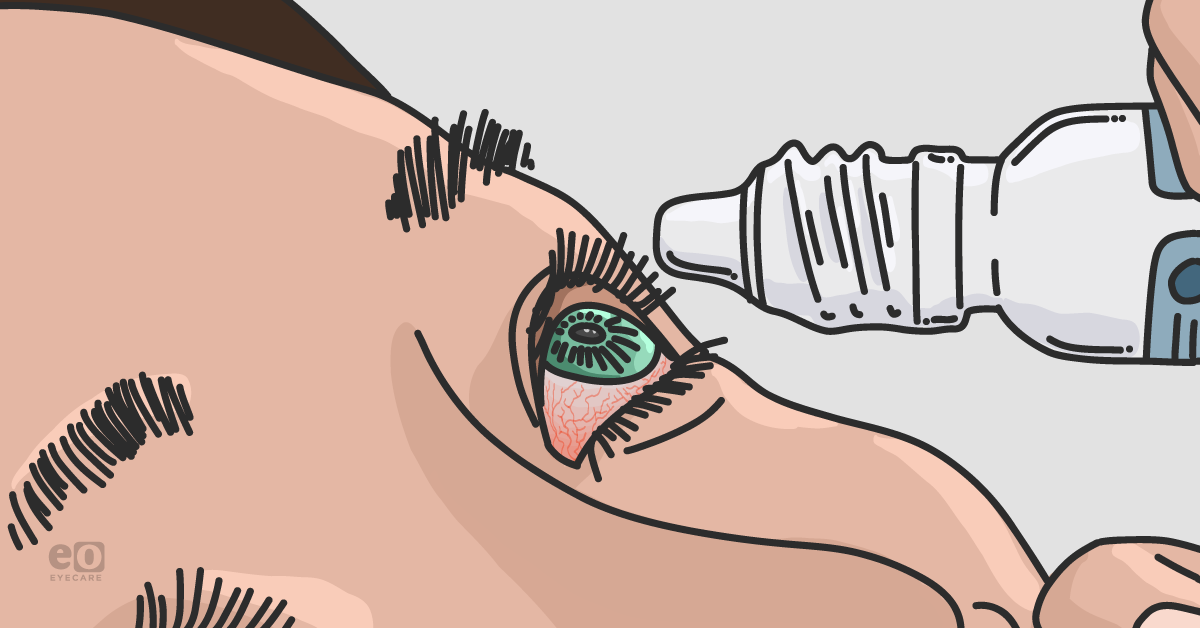As of May 2022, there is a new medication for the treatment of vernal keratoconjunctivitis.
Verkazia (cyclosporine ophthalmic emulsion 0.1%) is now available in the United States. Previous pharmaceutical treatments for vernal keratoconjunctivitis (VKC) consisted primarily of topical steroids, which are ill suited for long-term use due to their associated side effects.
We interviewed optometrists to find out what doctors think about the Verkazia eye drop for
vernal keratoconjunctivitis. Keep reading to learn more about this new development in pharmaceutical technology.
What is Verkazia?
Verkazia is a 0.1% cyclosporine ophthalmic emulsion, a topical immunomodulator. While cyclosporine ophthalmic emulsions have been used off-label to treat VKC in the past, Verkazia is the first specifically formulated for the treatment of VKC.
Verkazia
received FDA approval for the treatment of vernal keratoconjunctivitis in children and adults in June 2021.
What is Verkazia used for?
Verkazia is intended for the treatment of vernal keratoconjunctivitis, a rare but pronounced ocular response to allergens. While
allergic conjunctivitis (AC) is a fairly common condition most often associated with seasonal allergies, VKC goes beyond the classic symptoms of AC to include severe itching, giant papillae, thick and ropy discharge, eosinophilic concretions known as Horner-Trantas dots, and even shield ulcers. While VKC typically affects children, adults can experience a similar presentation known as atopic keratoconjunctivitis (AKC).
How does Verkazia work?
As a topical immunomodulator, Verkazia prevents the allergic ocular surface inflammation experienced by VKC patients. Topical immunomodulators work by inhibiting T-cell activation and reducing the number of immune cells and inflammatory mediators present, which are responsible for the inflammation and associated signs and symptoms observed in VKC.
“In clinical trials, Verkazia reduced most patient signs and symptoms of
keratitis, photophobia, tearing, and mucus discharge in as early as 4 weeks,” says Kambiz Silani, OD, chief clinical director of
Beverly Hills Optometry.
Where is Verkazia available?
Verkazia is available in pharmacies across the US, and can be prescribed by eye doctors (optometrists or ophthalmologists).
How is Verkazia dosed?
Patients prescribed Verkazia will need to instill
one drop 4 times daily (morning, noon, afternoon, and evening) in each eye affected by VKC.
What are the side effects of Verkazia?
“Patients should be aware of the top two side effects reported during the study, eye pain (12%) and itchy eyes (8%),” stated Dr. Silani. These most common side effects were reported to be transitory and mostly occurred during instillation.
Less common adverse reactions included reduction of visual acuity, ocular hyperemia, cough, and headache.
Who will Verkazia be best for?
Established treatment for VKC consists of both long-term and short-term management. Common therapies for VKC include topical antihistamines and dual-acting mast cell stabilizers, such as olopatadine and ketotifen, with
topical corticosteroids being utilized in more severe cases.
Cyclosporine has been an established option for eye doctors looking for a non-steroidal therapy for
many years now. “This medication can be used in children struggling to control their ocular allergies,” says Tiffany Yanase Park, OD of
Loma Linda University. “Because it is steroid-sparing, it will be especially helpful for children with VKC who also are steroid responders or have compromised corneas.”
“Since the onset of VKC is most common in boys under the age of 10, it is important to address this condition earlier so the disease doesn't progress into adolescence (or lead to
sight-threatening issues),” Dr. Silani adds. “In practice, once signs and symptoms of VKC resolve, physicians may consider discontinuing treatment with Verkazia. The treatment can be revisited if needed and if signs/symptoms reoccur.”
How will Verkazia impact patients?
As a therapy specifically formulated to treat VKC, Verkazia offers an alternative to off-label use of existing topical cyclosporine treatments. Because of the significant inflammation often associated with VKC, the use of steroids is frequently necessary; however, long-term steroid use has
substantial potential side effects.
“Mild VKC patients often benefit from topical antihistamines and mast cell stabilizers. Patients diagnosed with moderate to severe VKC with sight-threatening risks may require topical and even oral corticosteroids but long-term use of
steroids pose undesirable side effects such as infections, elevated eye pressure, cataracts, and delayed wound healing,” says Dr. Silani. “Verkazia (cyclosporine ophthalmic emulsion 0.1%) now offers a safe and effective year round solution for VKC patients.”
Dr. Park concurs. “Verkazia can be added to the small bucket of treatment options for vernal keratoconjunctivitis, which also includes topical antihistamines, corticosteroids, and immunomodulators (off-label),” she says. “Each medication has its pros and cons. The advantages of Verkazia are clear: symptomatic relief without a steroid component.”
However, she has reservations.
“The four-times-a-day dosing schedule can be intimidating for patients and parents alike! The studies are unclear if there is a dose-dependent response with partial compliance, so families will need to be committed to use,” Dr. Park warns.
How will Verkazia impact eyecare practice?
For many doctors, Verkazia offers a welcome addition to their armamentarium.
Jaclyn Garlich, OD, FAAO, founder of 20/20 Glance and owner of
Envision Optometry, is similarly optimistic about this new addition to the available treatment options for VKC. "I have many patients that suffer from severe allergies where current
topical allergy eye drops don't cut it,” she says. “Having a powerful non-steroidal option that I can use long-term to quiet the inflammatory response will be a wonderful new treatment for these patients."
Still, as with any new medication, it might take a while to see the effects in practice.
“The data supporting the use of Verkazia is promising, but I expect there will be a delay in integrating this medication on most prescription drug plans,” says Dr. Park. “Once it is streamlined into practice, I can see Verkazia being beneficial for that population for long-term management for patients affected by chronic VKC.”
